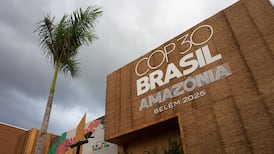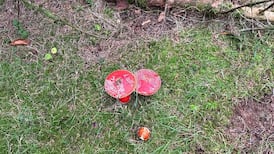SCIENCE:THE LATEST MISSION to Mars was launched a few weeks ago, carrying with it a roving laboratory that bristles with experiments. It has the usual long-reach arm, drills and mineral sampling systems but the Curiosityrover also sports a powerful laser beam that can vaporise rock.
The overall mission will cost about €2 billion, and billions more have been spent on eight recent rover and orbital missions to the Red Planet.
The money and effort are all about finding water on the planet and whether there are signs of past or current life there. Yet we don’t have to go nearly as far as the 56 million kilometres to Mars to find strange new life forms. They say no one in Ireland is ever more than 113km away from a world that teems with unknown life. Just head for the nearest coastline if you want a look at this mysterious environment.
Humans have travelled its surface for centuries, mapping it, plumbing its depths and harvesting its bounty. Yet our oceans remain only barely explored. There is massive undiscovered potential there for us to duly capitalise upon in terms of new life forms, food, energy, mineral and metal resources and yet we are travelling all the way to Mars to make discoveries.
Drop a rover on the bottom of the ocean and let it explore for a year or two. It wouldn’t need half the complex experiments to locate something new. We have already catalogued 120,000 marine species but the oceans harbour another 750,000 whose acquaintance we have yet to make, according to the Census of Marine Life.
The census was a decade-long, €481 million effort to learn more about our planet’s frontier. It involved 2,700 scientists in 80 countries whose scientific results were released in October 2010. It found 5,000 previous unknown species during that time. And you think you know a place? It estimated we only know about 25 per cent of the species living in the deepest waters of the Mediterranean Sea.
We have catalogued 1,700 fish species but there are 5,000 more to be found, the census estimates. And if you start counting bacterial species you go into a whole new zone. There is an estimated one billion species populating the marine environment, but we have only “discovered” a tiny fraction of them.
Scientists are always interested in any new species. Every living creature on Earth, from single-celled organisms to humans, carries the instructions for life in a genetic code called DNA. An organism’s DNA in turn responds directly to pressures placed upon it by the environmental conditions in which it lives. DNA changes as a result and those changes that improve survivability are retained, while those that don’t bring an end to that branch of the family tree.
That means all living organisms have unique genes with unique properties. These genes, in turn, may produce useful substances for use as medicines, disinfectants and antiviral substances. Some currently undiscovered species may carry the next big cure for cancer – so it is worth our while looking out for them.
The deep blue sea also delivers benefits we can tally today. The NUI Galway-based Socio-Economic Marine Research Unit launched its Ocean Economy Report for Ireland last month. The unit quantifies the benefits derived from our wider marine economy.
It showed our ocean economy had a turnover of €3.4 billion in 2007, the most recent year for full statistics and also when the economic cycle was at its most buoyant. It employed 17,000 people full-time at that stage and accounted for 1 per cent of GDP.
The Marine Institute’s annual “Stock Book” on marine landings released on November 23rd put our fish catch at €1.04 billion. But the institute likes to point out that there is a lot more going for us out there given the fact that our legally held share of the ocean floor represents an area 10 times greater than the footprint of the island itself.
The Government has promised to deliver 40 per cent of our electricity supply from renewable sources by 2020. While wind energy is a key source, longer-term tidal and wave energy production may come to dominate. For this reason considerable effort is going into the development of devices that can convert energy in the waves into energy in our homes.
Then there is the issue of vast stores of methane trapped on the ocean seabed. Methane can get locked up by water molecules to produce a solid that is sometimes referred to as “burning ice”. The US Geological Survey estimates there is twice the amount of energy in these methane hydrates than in all of the world’s known oil and gas reserves. A technology fix is needed to find a way to exploit these reserves safely however and so they await the creativity of a future generation.
i








